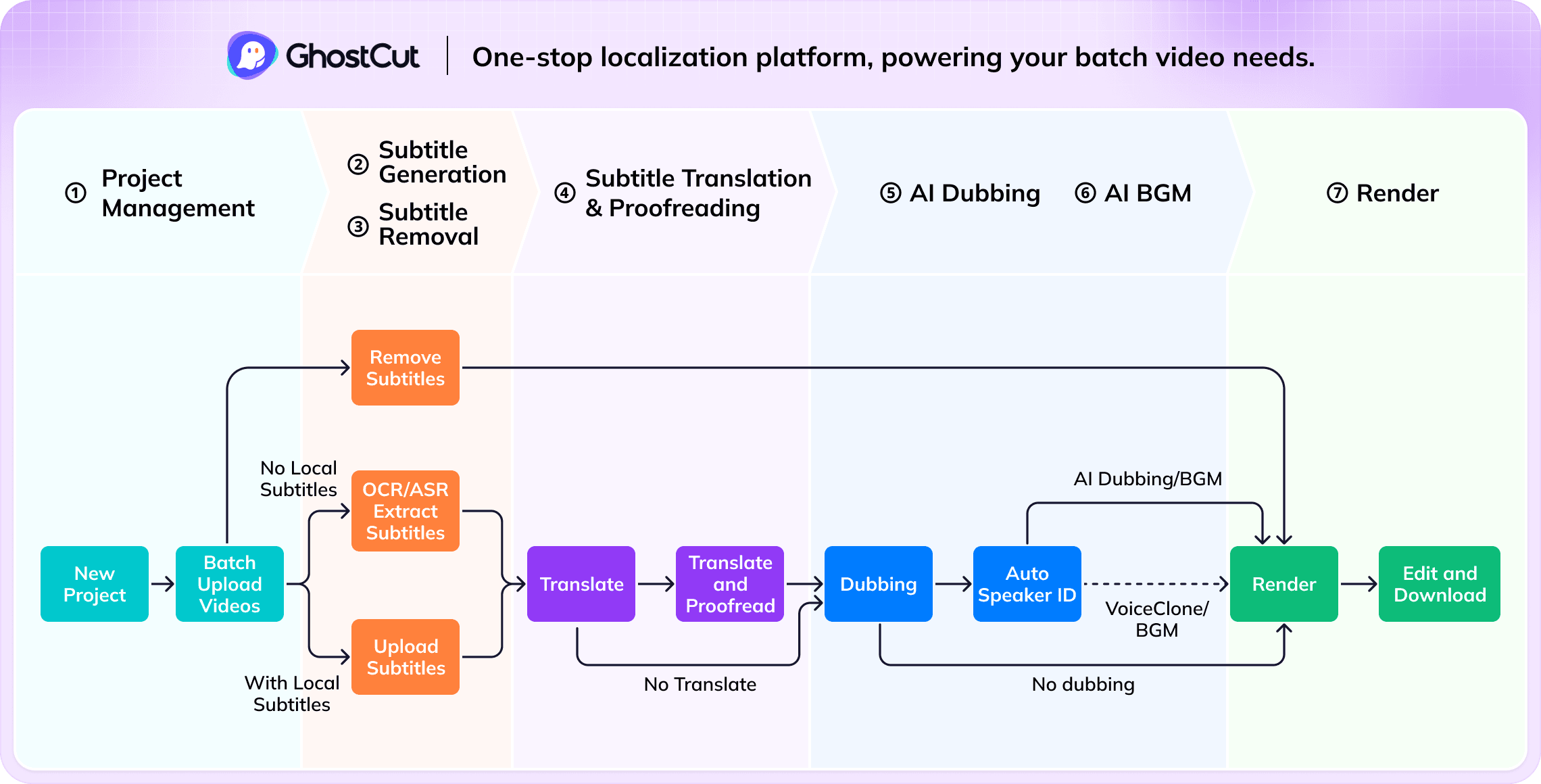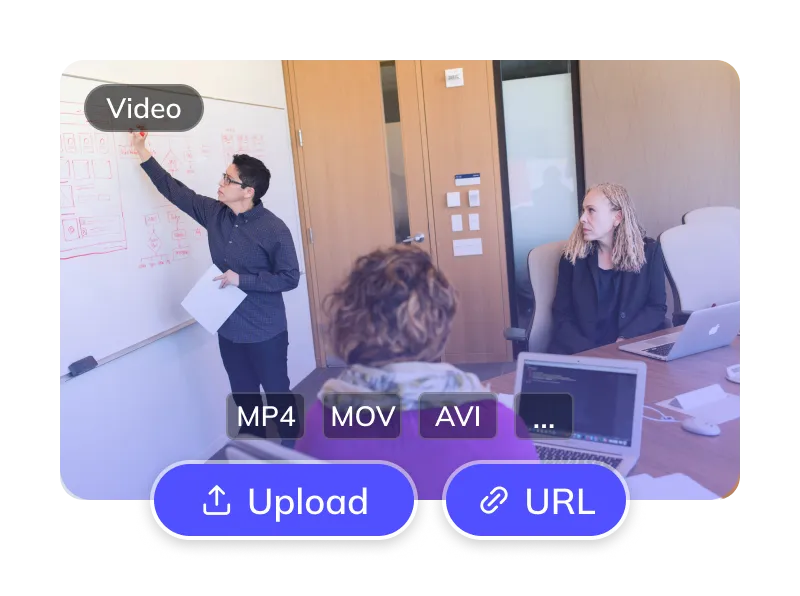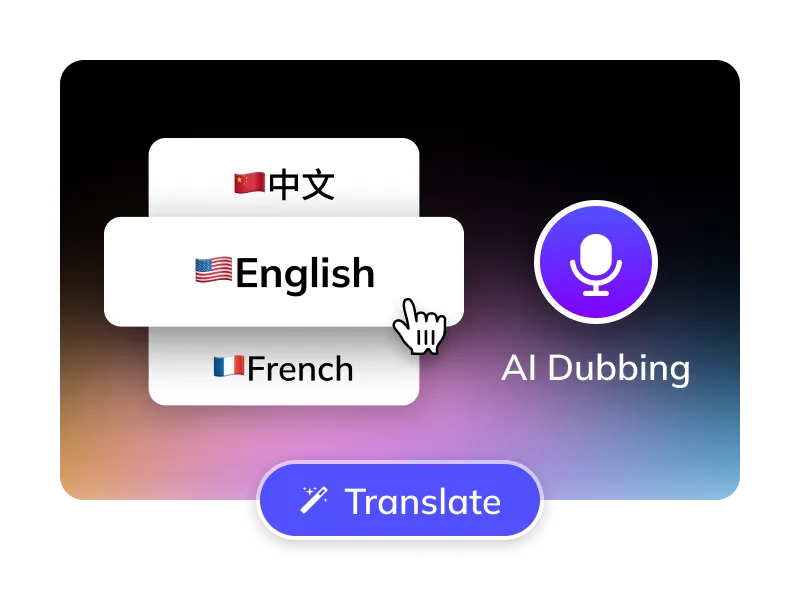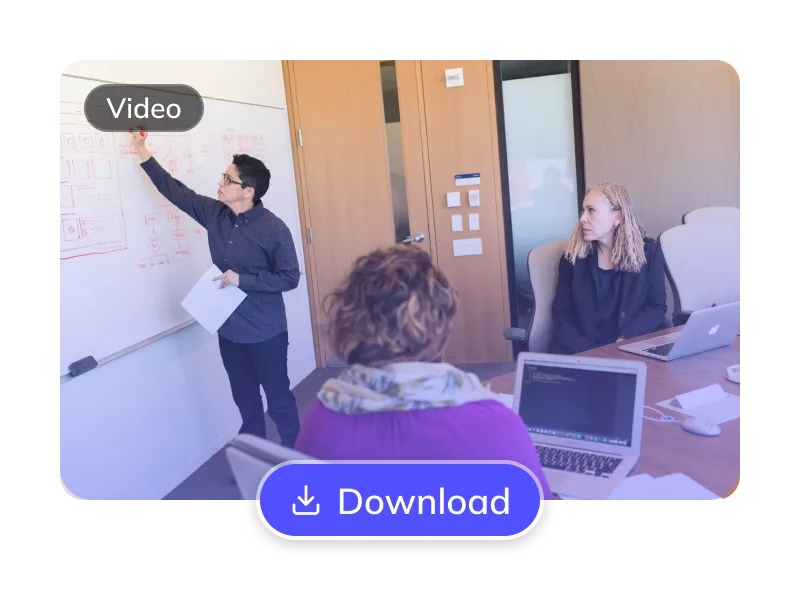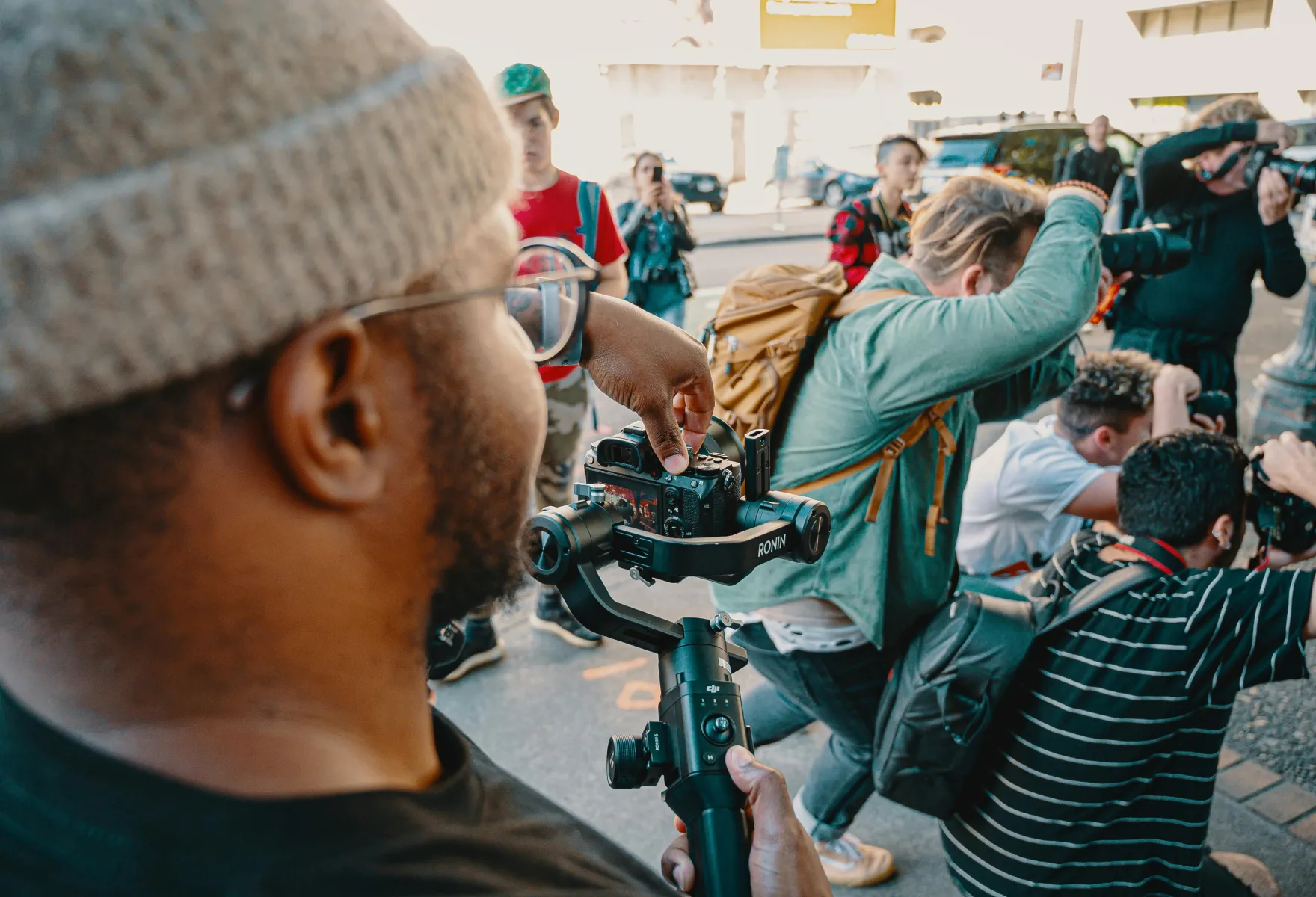How to Translate Movie Videos to English ?
Translate Movie Videos to Chinese in 3 Easy Steps
Trusted by 1,500,000+ Global Creators and Businesses
Why GhostCut for Your Video Translations?
GhostCut is your all-in-one AI solution for translating Movie content into natural, engaging Chinese.
Effortless Project Management
Manage Movie assets, subtitles, & Chinese videos. Batch process projects efficiently.
Pinpoint Chinese Accuracy
Up to 99.5% accurate. Optimized for Movie-to-Chinese with LLM calibration & multi-agent review for culturally fluent Chinese translations.
Lifelike Chinese AI Dubbing
Choose from diverse, human-like Chinese AI voices (US/UK accents). Emotion-cloning technology captures original tone for natural Chinese delivery.
Flexible Movie Subtitle Options
Optionally erase original Movie hardsubs for a clean slate. Translate embedded Movie subtitles directly.
Smart Multi-Speaker ID (Movie)
AI detects multiple speakers in Movie videos. Assign or clone distinct Chinese voices per character, with cross-episode consistency for complex Chinese dubs (dramas, interviews).
Efficient Batch Processing & API
Batch translate and dub 100s of Movie videos to Chinese at once. Seamlessly integrate with our robust API.
Versatile BGM Control
Keep or mute original BGM. Our unique tech can also isolate sound effects, meeting diverse copyright and distribution needs.
Unbeatable Value
Flexible Movie-to-Chinese plans. Try core features free. Automated pro service from just $0.1/minute.
Easy Online Access
No downloads. Instantly translate Movie videos to Chinese online. Works on Windows, Mac, & major mobile browsers for cloud processing anywhere.
The GhostCut Edge: Unmatched Accuracy, Speed, and Value.
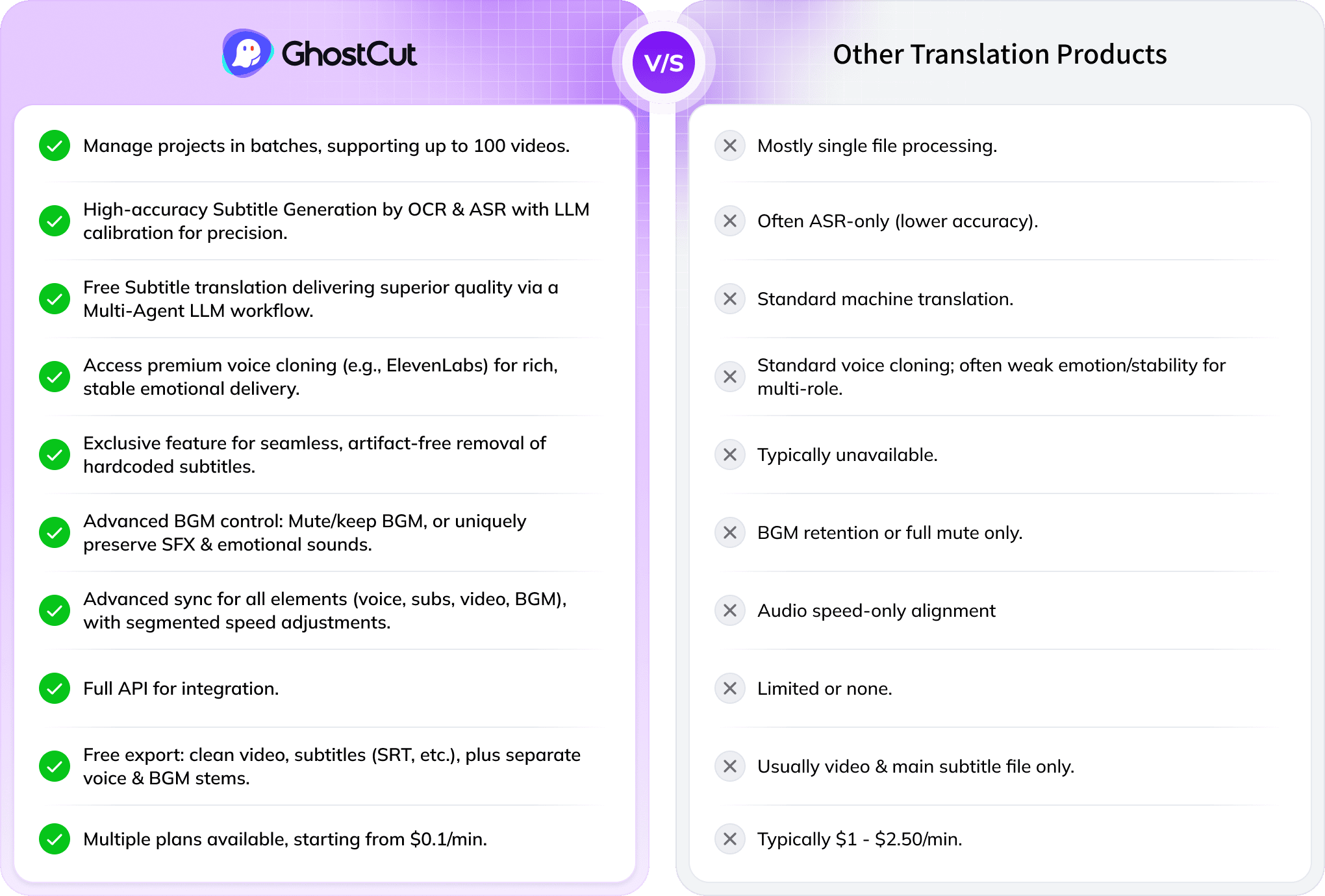
Every Algorithmic Optimization, Engineered for Quality Chinese Video
Mastering Long-Form Movie Drama & Multi-Character Dubbing
Translating a 100-minute Movie drama with 4000+ lines and many characters into Chinese is tough. Standard AI struggles to tell speakers apart, causing errors. GhostCut’s multi-modal AI (video, voice, text) excels in long-form, multi-speaker content, ensuring accurate, consistent character voices across entire series.
Translate Now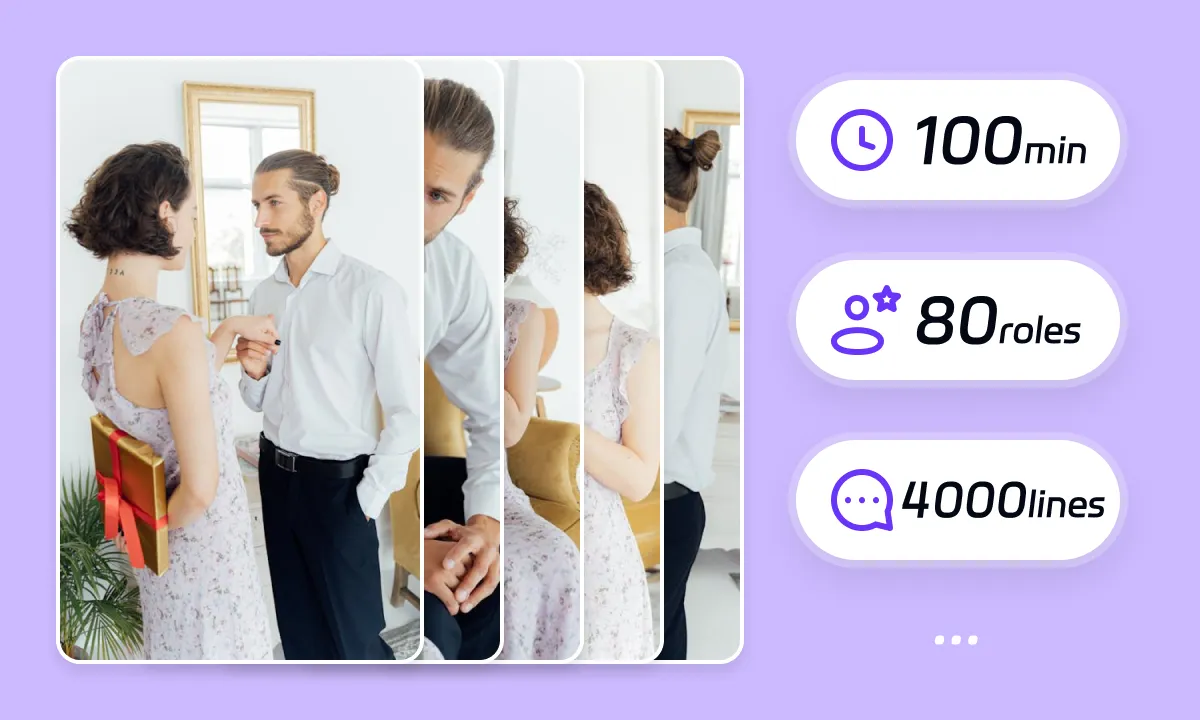
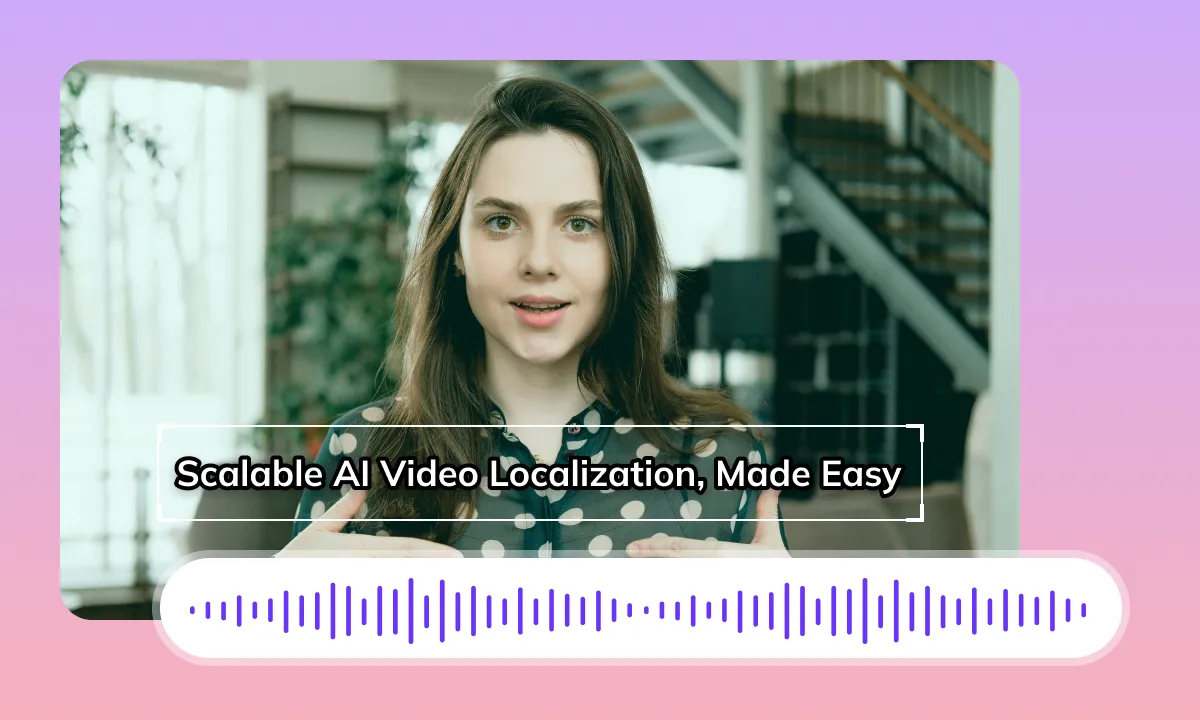
Seamless Chinese Dubbing & Perfect Lip-Sync
GhostCut ensures natural Chinese audio flow by treating related subtitles as whole ideas for TTS. It then precisely times new Chinese subtitles. Since Movie-to-Chinese translation can change speech length, our AI expertly adjusts the new Chinese audio, subtitles, video, and BGM to maintain perfect sync, just like a seasoned editor.
Translate NowBoost ROI with Flawless Movie Subtitle Removal
Original Movie hardsubs can limit your video's global appeal. GhostCut’s AI doesn't just blur; it intelligently reconstructs the background obscured by Movie subtitles, even complex ones, for a perfectly clean, high-quality visual. This means better viewer engagement, longer watch times, and higher ROI.
Translate Now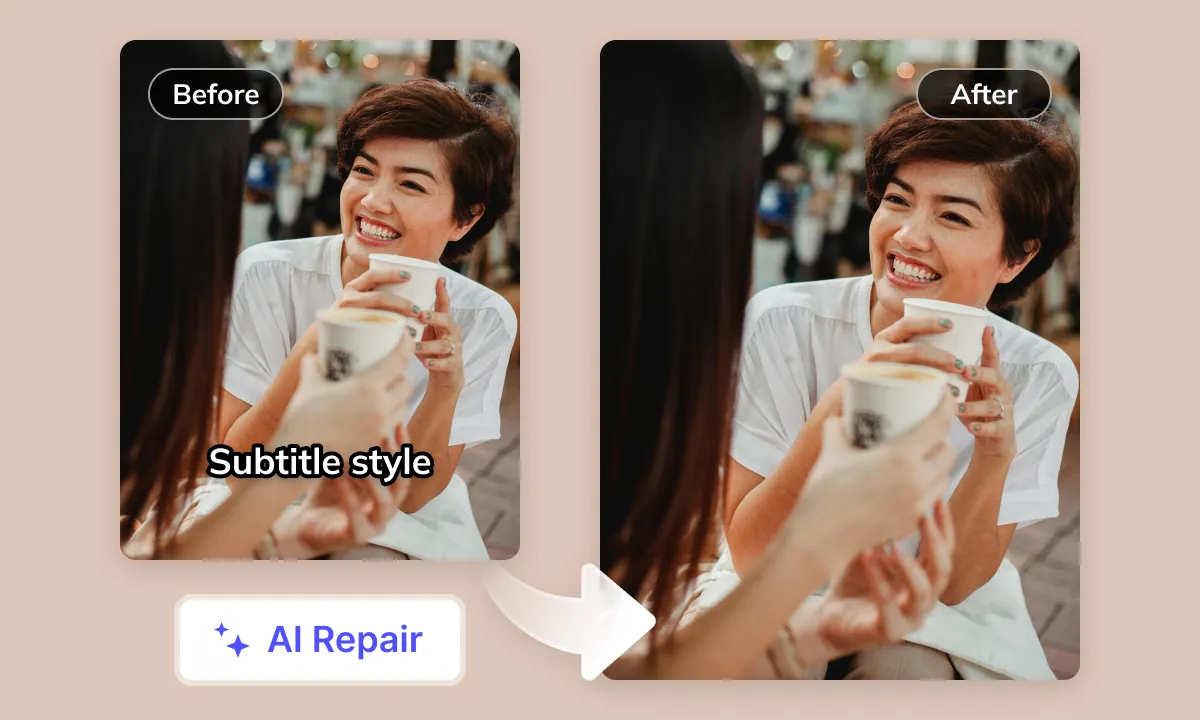
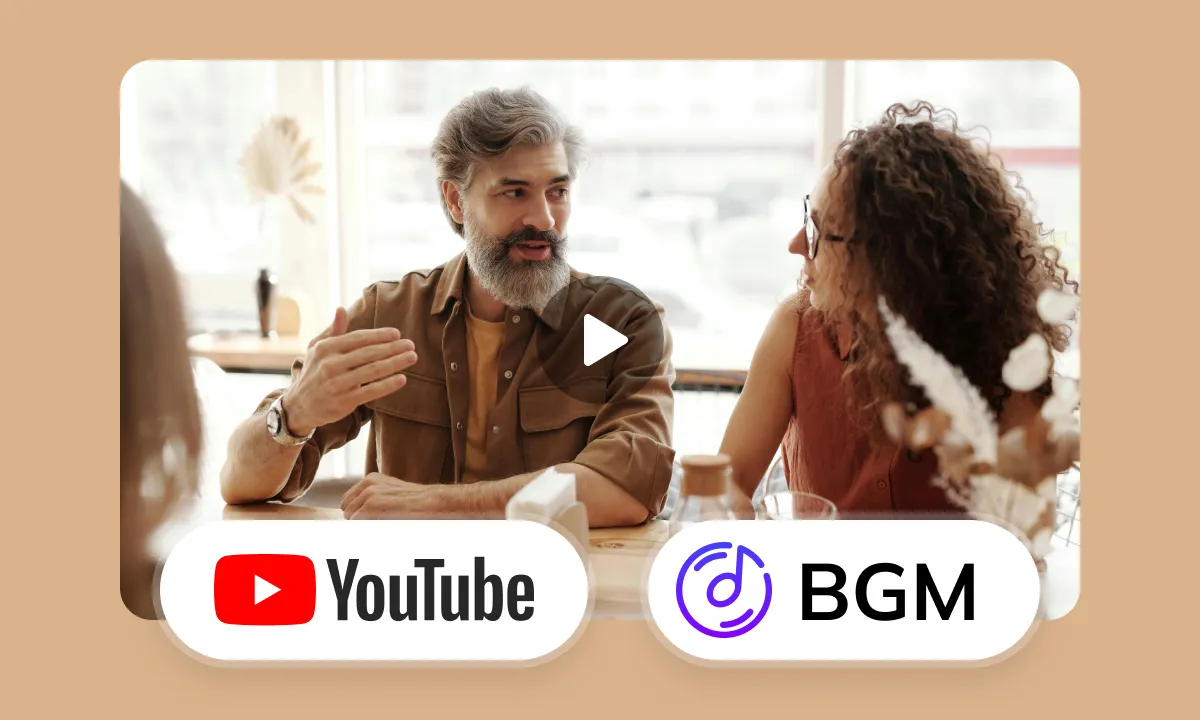
Smart Audio Control for YouTube Creators
Navigating BGM copyright on YouTube is tricky. GhostCut’s advanced audio separation isolates Movie dialogue for translation, while intelligently managing BGM, sound effects, and even emotional expressions. Our "Keep SFX, Remove Music" option is a creator favorite for avoiding copyright issues without losing your video’s impact.
Translate NowOverseas Films Deserve Billions of Chinese Audiences
Language barriers often prevent international films, regardless of origin or genre, from reaching the vast Chinese market. On major streaming platforms, inadequate Chinese translation and dubbing lead to poor audience comprehension, severely degrading viewing experience and hindering film reach. Hence, the market urgently requires professional, efficient AI film translation and dubbing solutions to effortlessly localize global content into Chinese
Film Localization to Chinese: Challenges Considerations
Handling Original Source Material
Translating foreign films into Chinese often involves addressing on-screen text (e.g., road signs, letters, screen displays) and original audio. A primary challenge is the proper removal or replacement of these elements to ensure they don't hinder Chinese audiences' comprehension and immersion
Cultural Nuances Linguistic Adaptation
Films inherently carry cultural backgrounds, historical references, daily habits, social contexts, and even slang from their origin, vastly differing from the Chinese context. Literal translation often fails to convey their deeper meanings or humor. The core challenge is effective localization, ensuring the Chinese version is accurate and deeply resonates with local audiences
Chinese Subtitle Layout Pacing
Chinese characters possess different visual density and reading speeds compared to Indo-European alphabets. When subtitling film dialogue into simplified Chinese, meticulous design of character count per line, sentence breaks, and display duration is crucial. This ensures alignment with Chinese reading habits, synchronicity with screen pacing and character performance, and prevents subtitles from appearing too quickly or staying too long, which could disrupt the viewing experience
Spoken Pace Translation Length
Film dialogue varies in pace, incorporating pauses, interjections, and non-verbal cues. Upon translation into Chinese, information density and sentence structure change. Especially in dubbing, a critical challenge is aligning the Chinese dialogue length with original lip movements and scene duration, achieving a perceived lip-sync that is 'similar in form, not lost in spirit'
AI-Assisted Translation Limitations
When employing AI for film-to-Chinese translation, current AI systems still struggle with complex plots, nuanced character emotions, puns, specific industry jargon, or unclear audio (e.g., whispers, dialogue amidst background noise). This can result in stiff or inaccurate translations, compromising the quality of the final Chinese output
Chinese Voice Acting: Tone Performance
When selecting or generating high-quality dubbing for the Chinese version of a film, critical considerations include whether the voice aligns with the character's age, personality, and emotional state, and if the voice actor's (or AI voice's) performance is natural and engaging. Sourcing professional Chinese dubbing talent that also matches the film's artistic style remains challenging
Technical Audio-Visual Sync
Achieving perfect audio-visual synchronization for film localization into Chinese, whether through subtitles appearing precisely when characters speak or dubbing perceptually matching lip movements, demands high-precision technical processing. Maintaining this sync is particularly challenging in close-ups or fast-paced dialogue scenes
High Standards for Chinese Film Localization
A successful film localization into Chinese demands: precise capture of original information (including subtext and emotions) - high-quality localized translation (considering culture, context, and style) - creation of Chinese technical assets that align with viewing habits (e.g., fluid, natural subtitles; expressive dubbing) - ensuring high audio-visual harmony in the final Chinese version
Tackling Video Translation Challenges with AI Empowering your Movie content for any worldwide scenario.
Your All-in-One AI Translation Studio
GhostCut offers more than just Movie-to-Chinese translation. It's a complete AI-powered workflow: subtitle extraction 、 removal 、 translation and proofreading to multi-character dubbing , BGM processing, and final rendering. Go from Movie source to global-ready videos, effortlessly.
